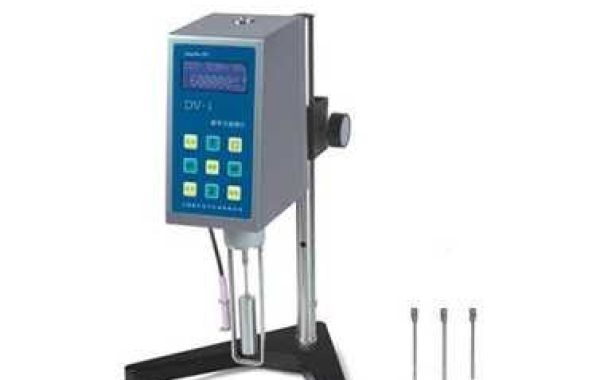A microcontroller is an integrated circuit (IC) that combines a central processing unit (CPU), memory, and input/output (I/O) peripherals on a single chip. This integration makes microcontrollers incredibly small and inexpensive, making them ideal for use in a wide range of applications.
A computer is a multipurpose device that may be used for many different tasks, including word processing, watching movies, editing videos, accessing the web, and producing software. While a microcontroller from top manufacturers Nuvoton and Mind Motion is designed to perform a variety of specific functions, such as managing an air conditioner or a washing machine. Keep reading this blog to understand the various uses, advantages, and characteristics of microcontrollers.
How Does Microcontrollers Work?
Utilizing its CPU, a microcontroller processes data sent to its input ports and outputs the result via output pins. A synchronous sequential logic circuit powers or drives it.
A sequential circuit is a logical circuit whose output depends on both the present inputs and the history of the inputs, according to the theory of digital circuits. Additionally, in synchronous sequential circuits, a clock signal-determined discrete timing is used to determine when a device's state changes. When compared to an asynchronous system, the fundamental benefit of a synchronous system is its simplicity.
What Are the features Of Microcontrollers?
Top characteristics or features of Microcontrollers are:
High functional integration: Because microcontrollers feature on-chip memory, I/O circuitry, and other circuitries that allow them to operate as miniature standalone computers without additional supporting circuitry, they are referred to as single-chip computers.
Flexibility and field programmability: Microcontrollers frequently use EPROM or E PROM as their storage device to enable field programmability and make them more usable. Numerous microcontrollers can be programmed for use in embedded systems once the program has been verified to be accurate.
What Are The Elements Of Microcontroller?
A microcontroller, as we have already mentioned, contains a variety of components, including a CPU, RAM, and ROM.
1. CPU
CPU is a computer's equivalent of the processor, which is made up mostly of the Arithmetical and Logical Unit (ALU), Control Unit, and Register Array. The arithmetic and logical operations of the information received from input devices or memory are carried out by the ALU, as its name suggests.
2. RAM
RAM Random Access Memory is referred to as RAM. RAM is used to store data dynamically while the microcontroller is carrying out instructions, just like a computer would. Since it has a volatile memory, all of the data is lost when the power is turned off.
3. Program Memory, or ROM
Read-Only Memory is referred to as ROM. Flash memory was once programmable in older microcontrollers, which is why it is known as ROM. However, the most recent microcontrollers—EEPROMs—allow for reprogramming (Electrically Erasable Programmable Read Only Memory).
4. Input Output Ports (I/Os)
Microcontrollers include a number of general-purpose input-output (GPIO) pins that can be configured as input or output pins by writing to certain configuration registers. These pins are referred to as input-output ports (I/Os). This pin can interact with the outside world by reading or writing HIGH or LOW states from or to its pins.
5. Clock
As it operates and is guided by sequential logic as previously described, a microcontroller needs a clock. The source of the clock can be internal, like an RC oscillator, or external, like a crystal oscillator. The clocking choices available to different microcontrollers will vary.
What Are The Benefits Of Microcontrollers?
It is important to keep in mind, that you can only benefit from microcontrollers if they are from trusted manufacturers like Nuvotonand Mind Motion, as they offer you ease, durability and toughness, unlike others.
Here are the top benefits of Microcontrollers
1. Little Size
A microcontroller, as opposed to a computer microprocessor, is designed to do certain functions. Therefore, there are very few hardware requirements in terms of RAM, ROM, and other peripherals. Thus, by drastically lowering the overall size, everything is incorporated into a single chip.
2. Low Cost
Microcontrollers are extremely affordable as compared to microprocessors since they have fewer peripherals, RAM, and ROM built onto a single chip.
3. Lower energy consumption
Because a microcontroller uses a smaller set of hardware, including RAM, ROM, and other peripherals contained in a single chip, it consumes relatively little power.
The processing instrument known as the microcontroller is quite handy. The architecture clearly identifies the microprocessor's area of expertise, but it also comes with a few usage drawbacks. However, microcontrollers from popular brands like Nuvoton and MindMotion are quite practical and helpful for small or microdevices. Additionally, the fact that they have been updated and always undergo fresh peripheral development makes them an amazing choice for usage in micro appliances. If you are looking for the widest variety of Microcontrollers ranging from MS51FB9AE, MS51FC0AE, MS51PC0AE, M480 series, M451/M4521, NUC029LAN, NUC970/80, N9H series, Nuvoton M032SE3AE, M0516LDN, Nu-link pro, M487KMCAN from Nuvoton and MindMotion with affordable microcontroller prices, visit Campus Component, India’s most trusted electric component supplier.







